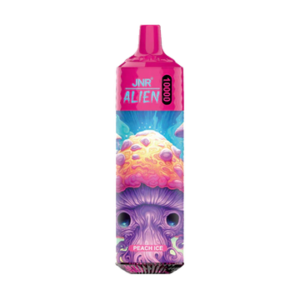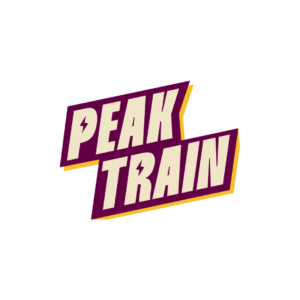How much does a laser rust removal machine cost and is it worth the investment?
When considering a laser rust removal machine, one of the first questions that often comes to mind is: How much does it cost, and is it truly worth the investment? This is a valid concern because such machines represent a significant financial commitment, but their potential for transforming how rust removal is approached in various industries is undeniable. Let’s dive deep into the factors that influence the laser rust removal machine price and analyze whether it is a smart investment for businesses.
Understanding Laser Rust Removal Machines
Laser rust removal machines are a cutting-edge solution designed to eliminate rust and other contaminants from metal surfaces using high-powered lasers. Unlike traditional methods like sandblasting or chemical treatments, lasers offer a cleaner, more precise, and environmentally friendly alternative. This makes them particularly attractive in industries that require high precision and cleanliness, such as aerospace, automotive, and manufacturing.
The laser technology works by focusing intense light energy onto the rusted surface, breaking it down at the microscopic level without causing damage to the underlying material. This process ensures that the metal surface remains intact and can be reused or repainted without the risks of corrosion or surface deformation.
Factors That Affect Laser Rust Removal Machine Prices
The cost of a laser rust removal machine can vary significantly, with prices ranging from a few thousand to several hundred thousand dollars. The price fluctuation is primarily driven by several factors:
1. Machine Type and Power
Laser rust removal machines come in various sizes and power capacities, which directly affect their price. A portable, handheld model with lower power output will be more affordable, typically priced between $5,000 to $20,000. These models are suitable for smaller operations or tasks requiring less power and portability.
On the other hand, industrial-grade laser rust removal machines designed for heavy-duty applications can cost significantly more, ranging from $50,000 to $200,000 or higher. These machines come with higher wattage lasers and are built for larger surfaces and more intensive tasks, often used in large-scale manufacturing or for treating large components.
2. Laser Technology
There are different types of lasers used in rust removal, including fiber lasers and CO2 lasers. Fiber lasers tend to be more efficient and durable, offering a higher price point than CO2 lasers. Fiber laser systems typically cost more due to their ability to deliver more precise and powerful performance, making them ideal for a wide variety of materials and thicknesses.
A fiber laser rust removal machine can cost between $30,000 to $150,000, depending on the machine’s specifications. If you opt for a machine that uses CO2 lasers, the cost can be lower, but the performance might not be as consistent, especially on harder materials.
3. Machine Brand and Manufacturer
Brand reputation also plays a critical role in the price of the machine. Established manufacturers known for their reliability, after-sales support, and innovation tend to charge a premium for their products. Brands like Trumpf, IPG Photonics, and Han’s Laser are well-respected in the industry, and their systems may come with a higher price tag.
For example, a high-end model from a trusted brand might cost anywhere from $50,000 to $200,000. However, lesser-known or emerging brands might offer similar functionality at a lower cost, around $10,000 to $50,000, but with a possible trade-off in support and longevity.
4. Customization and Additional Features
Many laser rust removal machines come with customizable options. Some may include automated robotic arms for precision movement, integrated vacuum systems for dust and debris extraction, and software that allows for remote monitoring and control. These advanced features significantly increase the machine’s price.
For example, a laser rust removal machine with advanced automation and enhanced features could range from $75,000 to $250,000. These machines are ideal for businesses seeking high-throughput solutions that can operate around the clock, reducing labor costs and increasing efficiency.
5. Market and Location
The region where you purchase the machine also affects its price. For instance, importing a laser rust removal machine from a different country may incur additional shipping, import duties, and taxes, all of which add to the overall cost. Moreover, there may be regional price variations based on demand and supply in specific markets.
In the United States, the cost for a laser rust removal machine could range from $10,000 to $200,000 depending on the features and the manufacturer. In Europe and Asia, prices might be similar, but additional costs may arise due to the local distribution channels or the specific needs of industries in those regions.
Return on Investment (ROI)
Now, let’s address the second part of the question: Is a laser rust removal machine worth the investment?
A laser rust removal machine offers numerous advantages, primarily in terms of precision, efficiency, and environmental impact. Although the upfront cost can seem substantial, the potential for cost savings in the long term is significant. Businesses that regularly deal with rust or corrosion on metal parts can expect several benefits:
1. Increased Productivity
Laser rust removal machines are fast and efficient, capable of removing rust quickly and with minimal manual labor. This leads to increased productivity and throughput in a manufacturing or repair environment. By reducing the time spent on manual cleaning, businesses can save money on labor costs and reduce downtime.
2. Precision and Quality
Traditional rust removal methods can be abrasive, potentially damaging the underlying material. Laser systems are non-abrasive, ensuring that only the rust or contaminants are removed while leaving the surface intact. This precision is essential for industries like aerospace or automotive, where even slight imperfections can have costly consequences.
3. Environmental Benefits
Laser rust removal is an environmentally friendly process, as it doesn’t require harmful chemicals or abrasive materials. Traditional methods, such as sandblasting, can generate hazardous waste, while laser technology produces minimal waste. As industries become more environmentally conscious, the adoption of laser technology offers a competitive edge.
4. Reduced Maintenance Costs
Laser systems are known for their durability and low maintenance requirements. While traditional rust removal methods often require regular equipment maintenance or replacement of consumables (e.g., sandblasting media), lasers have fewer parts that wear out over time, resulting in reduced maintenance costs and increased operational efficiency.
5. Cost Savings on Replacement Parts
By using lasers to remove rust early on, businesses can extend the lifespan of their metal parts and reduce the need for costly replacements. This can be especially beneficial in industries like automotive manufacturing, where replacing rusted components can be expensive.
Final Thoughts
In conclusion, while the laser rust removal machine price can seem high at first glance, it’s essential to consider the long-term benefits it offers in terms of productivity, quality, and cost savings. The key to determining whether it’s a worthwhile investment lies in understanding the specific needs of your business, the volume of rust removal required, and the industries you serve. If your operations involve frequent rust removal from metal surfaces, the efficiency and precision provided by a laser system can make a significant difference in your bottom line, positioning your business for success in a competitive market.













